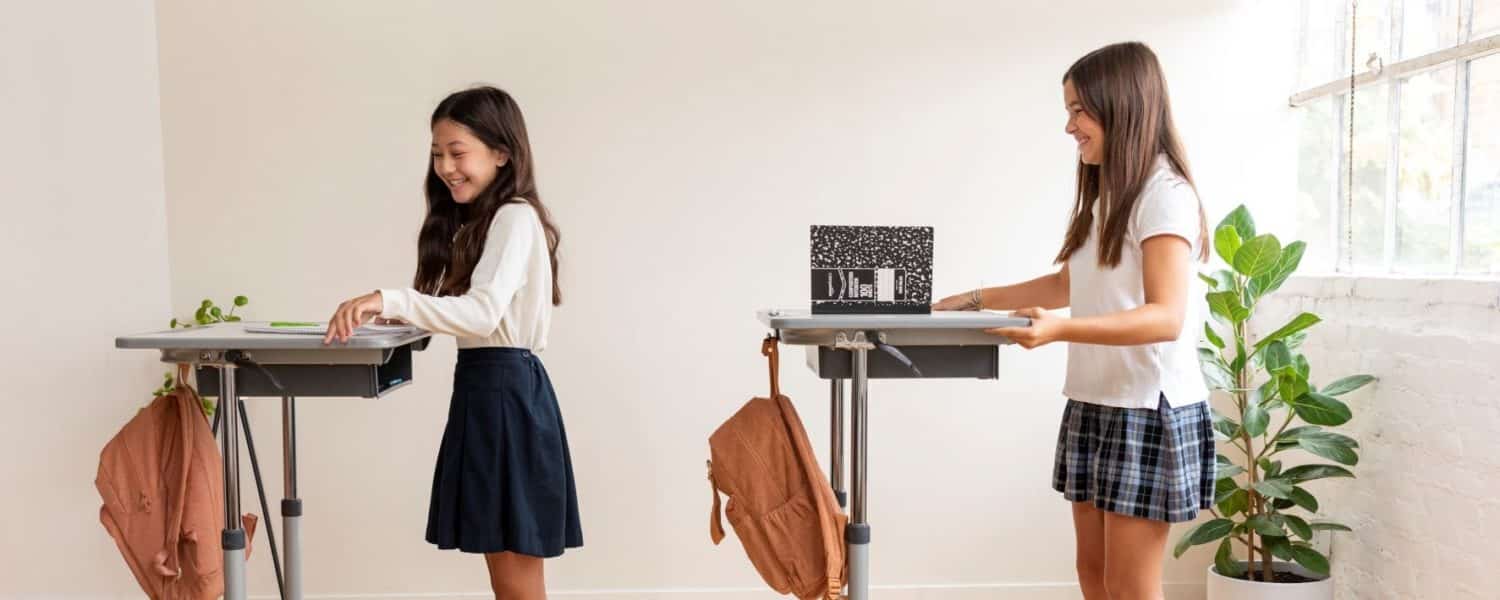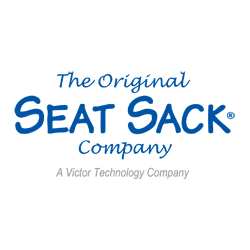By Stephanie Standley
Traditional classrooms were designed around the lecturer with the chalkboard as the focal point. Rows and rows of neatly aligned desks created a comforting and predictable order. This arrangement cut down on chit chat and established routine. Rules, well, ruled.
Classrooms typically had a structured approach that reflected the goals of education at that time. While ideal for assessments, solo tasks, or silent reading; educational research has suggested that needs have evolved.
Technology and the transformation from “teacher-focused” to “student-centered” learning have changed the game in classroom layouts. We know that some of the most valuable aspects of student discovery involve talking, collaborating, and exploration. It’s not about fitting children “into the box,” but rather realizing what works best for each student as an individual. Also, when children have a choice and take ownership of their learning, remarkable growth can occur.
Students spend many hours a day sitting at a desk, and, therefore, educators are intentional with seating and recognize how it can affect performance. The rise of flexible seating came from the realization that sitting for long periods has major downsides. Discomfort, trouble sustaining focus, and lack of alertness can result from being sedentary for extended times. We can ask more of our classroom furnishings. They can be multifunctional, creative, space saving, flexible, and fun.
Modern trends in classroom design include layouts that are versatile and adaptable. Learning spaces that quickly rearrange have become desirable because one classroom can have many functions. It is especially beneficial if kids can carry and move the desks and seating themselves. They evolve into active participants and learn self-care and responsibility. Students develop problem-solving skills as they rearrange the space. Encouraging kids to think about how they learn best allows them to customize their learning experience.
Movement has become integral in classroom design. Active seating supports the body’s natural need for motion. Flexible seating options such as sit and stand desks, chairs that wobble, bounce, and rock help learners in a variety of ways. These options encourage better posture and provide an outlet for wiggles. They can offer sensory input while keeping blood circulating and oxygen flowing. It gives students a choice and ownership in their own learning process, which is very powerful. Seats that move keep kids actively engaged and are healthier for their growing bodies.
Student-centered seating permits quick pairing and grouping. It also empowers educators to create whatever layout the lesson requires. Collaborative spaces such as reading corners, STEM stations, team huddles, labs, lounges, reading nooks, and discussion pods materialize instantly. Classrooms can transform into multipurpose spaces instead of having rigid and permanent arrangements.
Classroom design is all about options, and there are endless possibilities in the types of desks and chairs that are available to parents and educators. Selecting versatile pieces for learning spaces will extend the longevity of the furnishings, as well. Active seating can be repurposed and rearranged as changes in educational trends occur.
Space saving is a top priority for many educators, given increasing class sizes and budgetary concerns. Each feature in the room needs to pull double duty. Nesting desks, stackable seats, scoop seats, Surf Desks, and floor cushions can be ideal in this regard. Portable workstations can go anywhere and alter the environment in minutes. Stackable seating and desks are easily stored away when not in use and can be brought out at a snap of the fingers.
Dynamic classrooms promote accessibility for students of all abilities. Inclusive learning spaces focus on being well organized, uncluttered, and have thoughtfully arranged storage to maximize user-friendliness. Students with physical and learning disabilities benefit from having cleared walkways, open floorspace, and seating that leads to best learning outcomes. Accessible classrooms have options that address individual learning needs and provide sensory input when needed.
An exciting innovation in classroom design is the incorporation of dynamic seating. These are options that enable secondary focus, or the ability to concentrate on a job while the body is engaging in another task. Constant small movements, like rocking and bouncing, can provide sensory input for the body so the mind can focus on a mental task. Energy outlets during seated work function as a soothing activity in the same vein as swinging a foot or tapping a pencil. Releasing energy while they work encourages students to cut back on distractions and disruptions.
Active seating is popular with kids because of the fun factor, but also puts the ownership of learning into the student’s hands. Mobile desks, adjustable height desks, bounce seats, wobble stools, yoga ball seats, and rocking chairs are just a few of the alternatives that allow for movement.
Educators may offer several of these choices within the space. Students become classroom explorers when they tryout different options and answer the questions: What feels right for me? How do I learn best? Teachers report that students are eager to use and select their versatile seating. Providing kids an opportunity to try new things, take turns, and share is an added bonus.
Taking learning outdoors is highly motivating for students. Learners discover, reflect, and gain knowledge through hands-on activities. Natural environments provide experiences for all of the senses and may uncover skills and strengths not highlighted in a traditional setting.
Future-focused classrooms are ones that are adaptable, flexible, engaging, and allow for collaboration. They utilize purposeful and thoughtful designs created to achieve the educational outcomes. They are driven by the curriculum to support young innovators. Modern environments offer choice and include all learners.
Stephanie Standley, M. Ed., is a mom, educator, writer, and outdoor enthusiast. She has more than 12 years of classroom experience as a teacher and currently supports students in Special Education. She is inspired to use evidence-based practices to educate children in creative and engaging ways.
ECR4Kids was founded in 2003 with a passion and goal to help childcare providers access the supplies they need for their schools and classrooms at an affordable cost. They are committed to offering high-quality classroom furniture and equipment that is safe, durable, and developmentally appropriate, www.ecr4kids.com.










